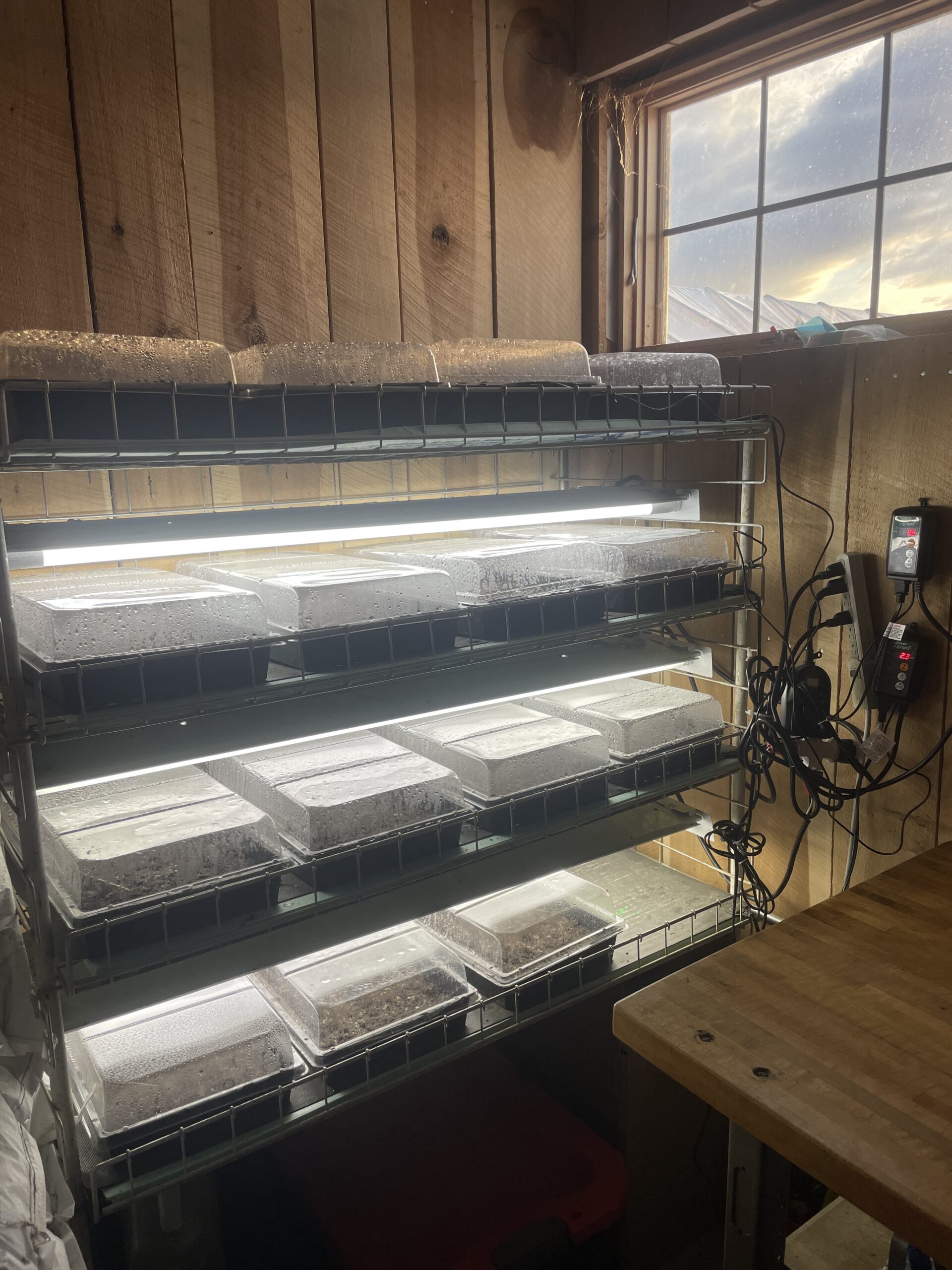The seed-starting season is kicking off in earnest here at Good Dirt Farm, and while the fields are still deep in snow, our indoor germination setup is providing the perfect conditions for seeds to start growing. Our system is about as cheap and simple as it gets, yet it allows us to germinate several hundred seeds per week (with proper planning of course). A setup like this is great for a small farm like ours, but would also work very well for the home gardener with limited space. Let’s take a tour!
First, a few notes on the major concerns when trying to germinate seeds. I’ll break it down into a few categories: moisture, temperature, and light. If you properly take care of all three, you’ll have strong, even germination.
The Ideal Moisture for Seed Germination
Those of you who haven’t read our blog post on soil blocking should definitely give that article a read. For us, moisture is fairly simple. We use a high-quality seed starting soil mix and place humidity domes over our trays. The key to good germination is high humidity and good seed-to-soil contact. A good soil mix will ensure the latter, and clear humidity domes take care of the former while letting light in.

I would not say the humidity domes are completely necessary, but if you have a dry room, they will be very helpful. Also note that for the majority of seeds, light is not required for germination, so a clear cover isn’t necessary. Many farmers will use blankets or stack trays on top of one another. Seed packets will usually tell you if you need light.
Finding the Right Seed Starting Temperature
Germination temperature is perhaps the biggest factor for high-quality seed germination. By and large, the key condition to go for is consistency. A constant temperature is usually going to result in more even germination than one that fluctuates across the day. Generally, lower temperatures will result in a longer germination time.
Different crops require different germination temperatures. For example, tomatoes and peppers prefer around 85F, but cool weather crops like brassicas and lettuce prefer around 70F. This means that it may not be enough to simply keep your seed trays in a room in your house.

Our setup uses heat mats that are placed on top of foam insulation boards. The heat mats are connected to a thermostat, with the temperature reader of the thermostat being placed into the soil. The thermostat maintains whatever temperature you set it to, and the foam insulation allows us to keep our trays in our unheated shed.
Let There Be Enough Light
It’s crucial that plants get enough light as they begin popping out of the soil. Most vegetables will not get enough light even by a sunny window. The result can be “leggy” plants with very long stems, ultimately creating an unhealthy plant. We will often transition our trays to our outdoor nursery immediately after germination, but we will also keep warmer weather plants like tomatoes and peppers under lights for several weeks.

The quality and placement of lighting is very important. Most fluorescent shop lights will do well, but you can also find countless lights specifically designed for growing seedlings online. The distance between the light and the plants should be no more than a few inches for fluorescent lights but may be longer for other grow lights. It’s important to read instructions when installing a grow light, so you create the ideal setup for your equipment and seedlings.
Lastly, the duration of light is important. Even grow lights close to the plants don’t match the intensity of the sun, so it’s best to give plants over 14 hours of light a day. We have a simple timer that gives our plants 18 hours of light per day. Those 6 hours off are important too, since most plants require some downtime to properly grow.
We hope some of this info will inspire you to set up your own little germination area in some warm, bright corner! Starting seeds while the snow falls outside in late winter is one of our favorite times of the year, a prelude to the abundance of spring and summer

